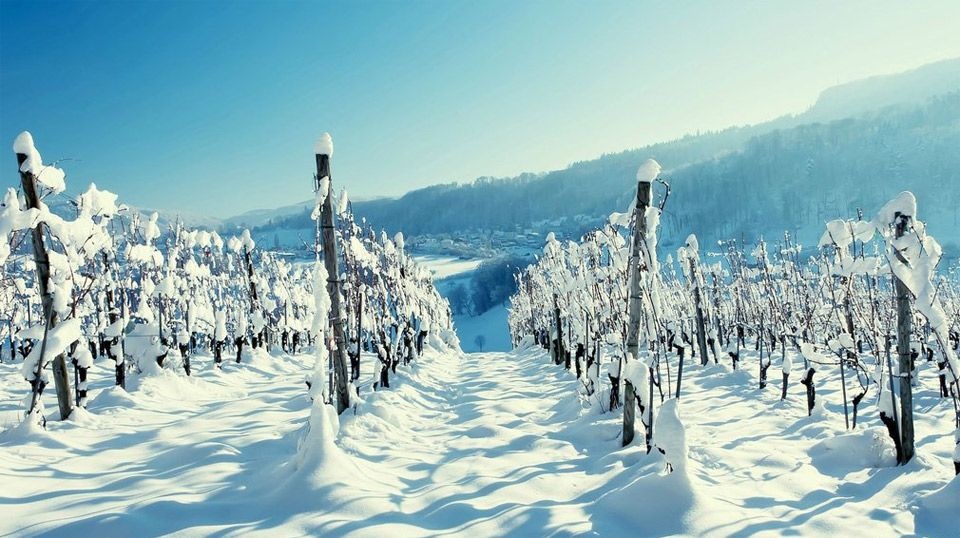Winter in the Vineyard
- Posted on
- Posted in argentina, Australia, Cabernet Franc, Cabernet Sauvignon, California, france, Germany, Malbec, Petit Verdot, Syrah, Washington
- 0

This time of year, beautiful images circulate of bare wooded grapevines against the backdrop of snow-covered ground. Snow-covered ground isn’t an issue for the vines this time of year. The snow acts as a blanket and can protect the vine’s root systems from sub-freezing temperatures.
For young vines, a vineyard team may go out and put soil up the sides of the bottom of vine near the ground. This is called “hilling up.” Vines come grafted to rootstocks that are selected specifically for the vineyard site, and this graft needs to be protected in its early growing years. Grafting a vine onto a different rootstock allows pest and disease resistance, intaking of less nutrients in highly fertile soils, intaking of less water in soils that hold water, and many other benefits.
The image of the bare wooded grapevines would lead you to believe that the vines are dormant but that isn’t the case. While growth above the ground stops for the winter, the vine’s roots are still growing, seeking out nutrients that will be used for the next season’s growth.
During the late fall and winter, the vine is busily storing carbohydrates in their trunks which will be used for energy in the spring to send out new shoots, leaves, and clusters. Vineyard workers will go out in the cold or even freezing temperatures to prune (trim) off much of the old growth.
The growth for the coming year physically exists on the vine already as little bumps called buds. Each bud contains shoots, leaves, and structures that will become grapes. Pruning will be performed to limit growth to a certain number of bumps which ultimately will dictate how may clusters the vine will have. Limiting the number means that the vine’s energy, once spring comes, is focused into fewer buds, which is felt improves grape quality.
Vineyard workers may leave extra canes (wooded growth) with their buds on the vine during the initial prune as a way of having some insurance. This means that when they go to do a final prune, they will inspect the health of the canes and they can leave the healthiest and remove the rest.
Pruning in spring can delay bud break and that is a good thing in areas that are susceptible to late frosts. When bud break occurs, the structures contained within the bud emerge. The young growth of shoots, leaves, and clusters can be decimated by a frost.
Next time you drive past a vineyard in winter or see a photo of a vineyard in the winter, remember that there is still much going on below the surface, and vineyard workers will be out in the cold at some point, so that the vineyards can produce something wonderful in your glass. Cheers.

Comments
Be the first to comment...